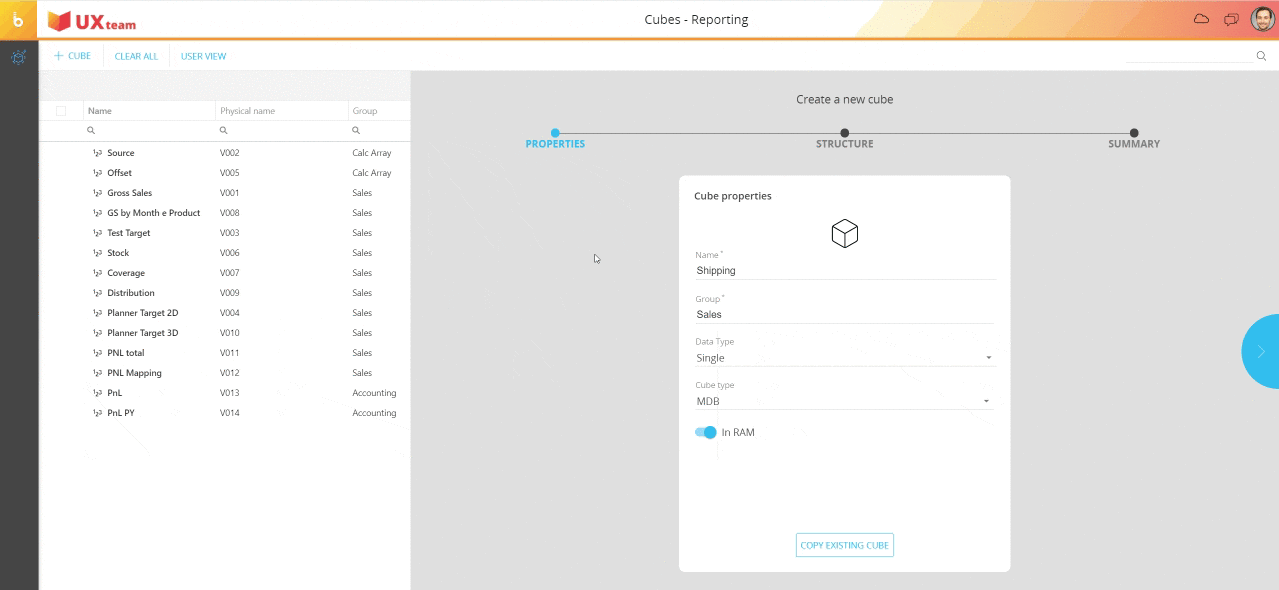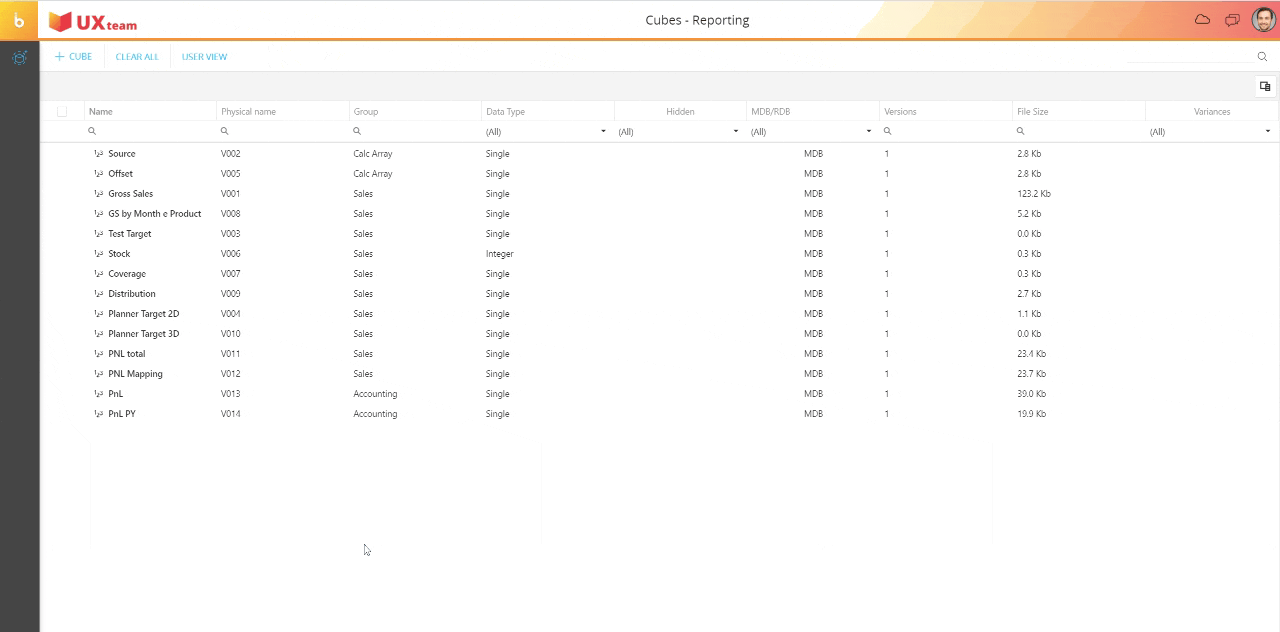Cubes
Cubes creation and structure configuration have been completely redesigned and improved, both in interface and underlying logic, providing a whole new level of data management and performance.
Cubes structure
Sparsity configuration
The ability to configure dense/sparse structures, unavailable from Board version 11, has been restored. When you create new Cubes or new Cube versions, an "Edit Sparsity" button is now available: by clicking on it, you will be able to manually configure entities as dense or sparse.

This configuration can also be skipped. In that case, Board will automatically set entities as dense or sparse for you.
Automatic dense/sparse configuration: how it works
When Board is in charge of the definition of a dense/sparse structure, it will put as many entities as possible in sparse mode, thus trying to keep the sparse structure pointer to 64-bit based on the automatic or manual max item number set for each entity.
In other words, Board will put all entities in sparse mode as long as the product of max item numbers stays below the 64-bit limit.
In case of automatic max item numbers, affected entities will be considered as having a corresponding max item number greater than the current one while keeping the value below the 64-bit limit.
Manual dense/sparse configuration
By clicking on "EDIT SPARSITY" button, you can manually set entities as sparse. If the 64-bit pointer is not sufficient, Board will scale up to a 128-bit pointer. For entities set as dense, however, there are no such limits.
There must always be at least one dimension set as sparse. Time dimensions are always set as dense unless the cube contains only one single dimension and the latter is the time dimension itself.
Although you can manually define the sparse structure, this setting doesn’t affect Dataflow-generated entries, but only has an impact on the performance of screens and procedures.
Cube Versions
Unlike previous Board 11.x versions, multiple cube versions can now be created freely. You’re now able to configure different cube versions on each entity tree.
The Learning mode is no longer available.
Setting up a version of a cube is exactly like setting up a new cube: you can manually set entities as dense or sparse or have Board do it automatically.

Versions are automatically aligned after Data Readers, while alignments must be manually performed after DataEntry inputs and DataFlow actions on versioned cubes.
The version with maximum detail is called Structure and is always in the leftmost position while creating cube versions. You cannot create a version a version more detailed than the Structure.
Max item number
The max item number has not undergone major changes as far as configuration is concerned. It can be automatically calculated or manually set, and it is used for defining sparsity.
If you set it to automatic, Board will apply the maximum possible value while keeping the cube structure unchanged.
Once an entity reaches its max item number, no new members will be added within it and all exceeding entries coming from Data Readers will be discarded.
In order to change a manually-set max item number or recalculate an automatic one, you will need to clear all cubes that contain the corresponding entity among their dimensions, change the maximum item number and reload the data onto cubes.